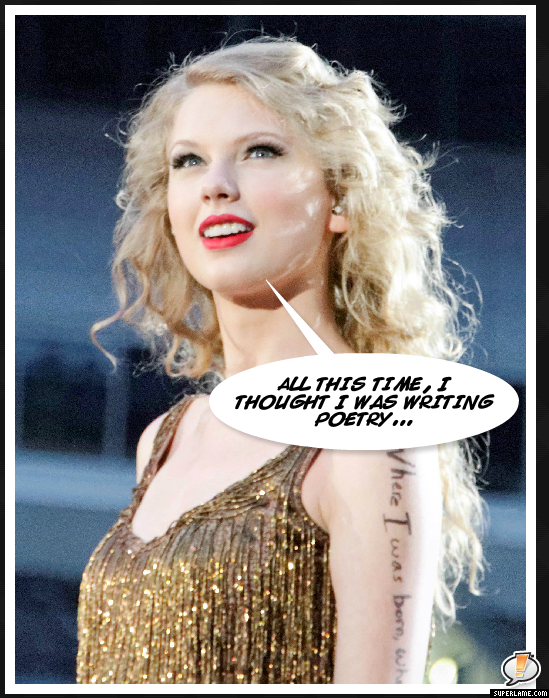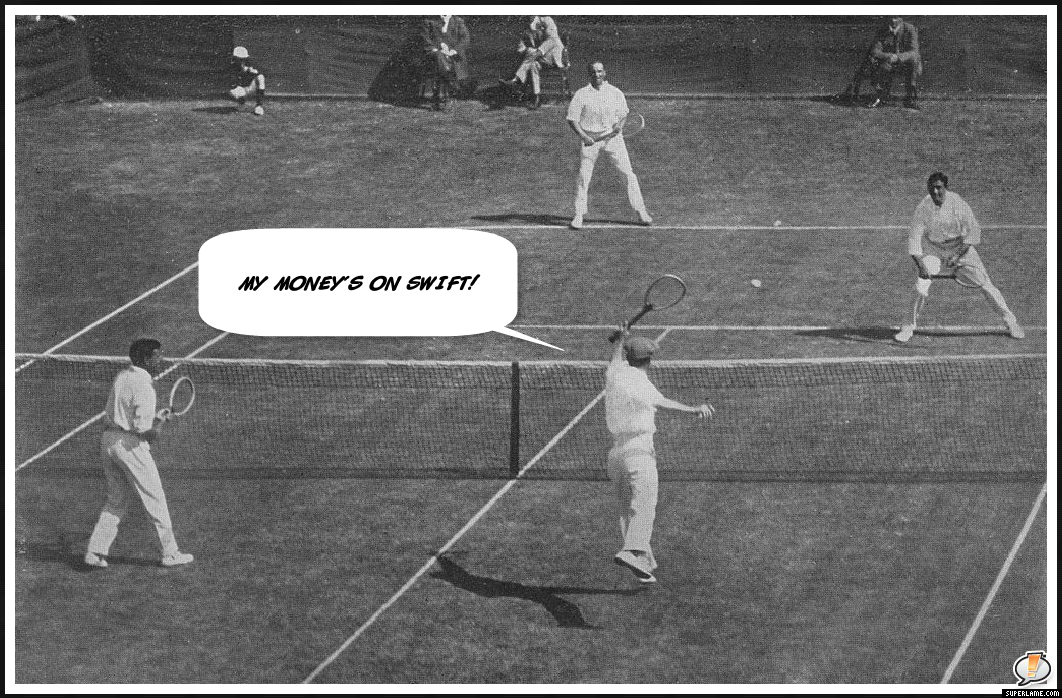As if writing a more standard essay were not enough, your instructor slaps you with this: a compare and contrast essay. What makes it worse is that it’s about poetry—as if you know how to compare and contrast poems already.
How does she expect you to completely decipher and explain not just one poem but two? To make matters worse, some of the poems you have read in class this semester may as well have been written in a foreign language.
Let’s take a step back and start in a language you do understand: pop songs. Now, pop songs are not poetry. And your instructor likely wouldn’t appreciate an essay about the nuances of the latest Pitbull song when compared to Twenty One Pilots’ new single. But this is a good place to learn the technique of how to compare and contrast poems.
Comparing Taylor Swift to Miley Cyrus: Yep, That’s Right
THE MOST EPIC RAP BATTLE OF HISTORY!
Just kidding. I wish.
Instead of hosting a showdown, I’m going to show you how to compare and contrast poems successfully using “Wrecking Ball” by Miley Cyrus and “Blank Space” by Taylor Swift as my examples.
(In case you’ve been living under a rock, here are links to the lyrics of Wrecking Ball and Blank Space.)
Whenever you’re comparing and contrasting poetry, the first thing you should do is make a list of both obvious and subtle similarities and differences. Here’s what such a list might look like for these two songs:
- Both songs discuss dysfunctional or doomed relationships.
- Both songs use violent imagery and language.
- “Wrecking Ball” is more of a lament, whereas “Blank Space” has a satirical tone.
- The songs both discuss a superficial love where no one succeeds in having a deep connection with the other person.
- “Blank Space” comes across as purposefully malicious, while “Wrecking Ball” makes the violence in the relationship sound accidental.
- “Blank Space” employs a variety of slant rhymes, whereas “Wrecking Ball” primarily uses full rhymes.
Once you have a list of significant similarities and differences between the works you’re comparing, you can move on to building your thesis statement.
Note that pop songs don’t have many of the elements of a poetic work. When looking for similarities and differences in the poems you have chosen, make sure to consider the rhyme scheme, format, meter, and time period.

Building a Thesis Statement for a Comparison Essay
The thesis statement is arguably the most difficult part of writing your essay, but it doesn’t have to be intimidating. In learning how to compare and contrast poems, keep in mind that your thesis statement should have the following elements:
- A basic, one-to-two-sentence outline of what you will discuss throughout the essay
- An evidence-based opinion or argument that someone could disagree with
- A balanced sentence structure that gives equal weight to both works
If you need more information about building the perfect thesis statement, check out this blog about the five-step thesis statement.
In order to come up with a thesis statement for my pop-song comparison, I need to return to my list. What sort of argument would encompass most, if not all the points I listed?
To make this easier, let’s start with a template:
Though [poem 1] uses [poetic element 1] and [poem 2] employs [poetic element 2], both works contribute to [common theme].
Using this template, let’s add the songs I chose as examples and spruce up the wording. A good thesis statement for comparing these songs might look like this:
Though “Wrecking Ball” focuses on the lack of emotional connection in a relationship and “Blank Space” takes a more satirical, callous perspective on relationships, both songs employ violent imagery to convey that relationships are often superficial.
Here, I have hit many of the major talking points I want to cover within my essay. I have also outlined how my essay is going to look. Also note that it would be reasonable for someone to argue against my claim that the songs are about the superficiality of relationships—this arguability is what makes for a good thesis statement.
To help you get started, here are some poetic elements to consider for your thesis statement:
- Diction
- Tone
- Form
- Meter
- Rhyme
- Imagery
- Narrative voice
- Line breaks
You can find more ideas of what to discuss in your paper by looking at these poetic elements.
And you can get more help building the perfect thesis statement here (hint: choose the compare and contrast essay type).
How to Compare and Contrast Poems: The Tennis Match Problem
Unfortunately, you want to avoid tennis matches in your essay.
While writing comparison essays, students often run into the tennis match problem once they get into their body paragraphs. The tennis match refers to when you switch the poem or body of work you’re talking about every couple sentences or so.
While you do want to give equal weight to each work you discuss, you don’t want your reader getting whiplash every time you swap between them. In other words, “Who would win in a tennis match? Miley Cyrus or Taylor Swift?” isn’t an ideal title or premise for our example.
To avoid this issue, you can employ one of two methods.
Method 1: One at a time
In this method, you analyze one poem completely before digging into the next. This way, your reader gets plenty of space to think about your points and arguments. However, in using this structure, you risk missing the real comparison between the works.
If you choose to explicate on the works separately, make sure to use phrases such as “Though [poem 1] relies heavily on … , [poem 2] … ” and “Unlike [poem 1] … ”
Method 2: Switch between paragraphs
The other way for how to compare and contrast poems is to switch between works every paragraph. In this way, you discuss one element of one poem and move on to discuss the same element in the second poem. Often, this method is the easiest for a reader to follow.
When using this structure, make sure you have complete body paragraphs. A complete paragraph should include the following:
- The topic sentence (an argument about the evidence you have)
- Evidence (a direct quote or paraphrase from the work)
- A tie-in (to connect the point back to your thesis statement)
That’ll make you way too good to play tennis.
Want to know what a good compare and contrast essay looks like? Check out these example poem comparisons.
Final Tips on Writing a Comparison Essay
Now that you have the basics down and know exactly how to pit Taylor and Miley against each other, you can move on to the big leagues: writing a comparison essay for actual poems.
To help you, here are some closing tips:
- If your instructor allows you to choose the poems you compare and contrast, choose several pairs and make an initial comparison list with each pair. From there, you can better see which set would make for a better, more substantial essay. Remember, for best results, you want two poems that have a common theme.
- After writing your first draft, read your essay out loud and imagine the tennis match scenario. Is there too much back and forth? Will readers understand what you’re trying to prove?
- Make sure you’re using enough evidence to prove your thesis statement. Do this by including direct quotes. Don’t forget that you should only have one piece of evidence per paragraph. You should use the rest of the paragraph to explain why the evidence is important.
And when you’re working on your final draft, don’t forget to get a second pair of eyes on it. Kibin editors will provide insightful advice about how you can improve your essay and get a better grade.
Now, fill that blank space on your paper, go in like a wrecking ball, and impress your instructor with your know-how on how to compare and contrast poems like a lit major!

